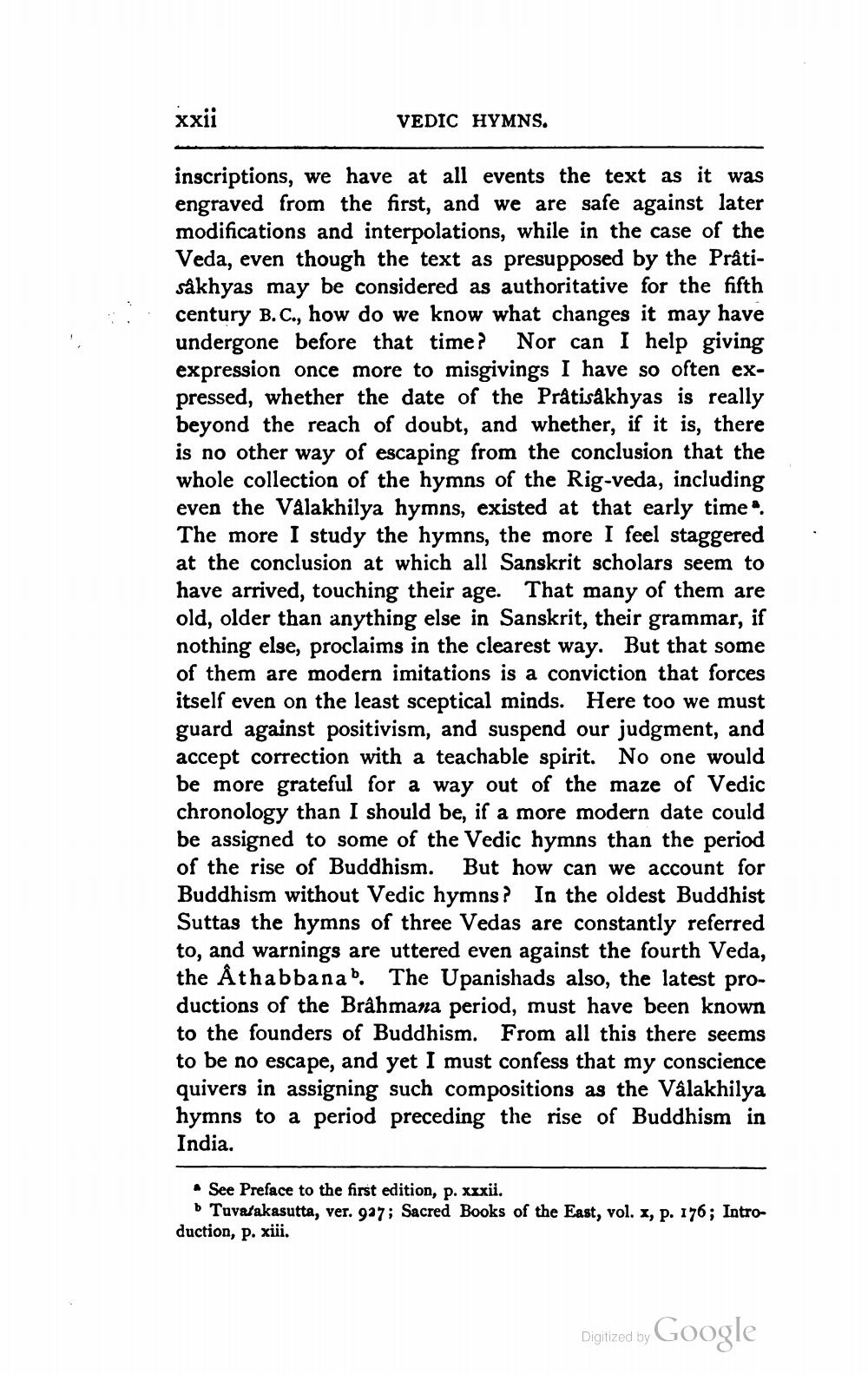________________
xxii
VEDIC HYMNS.
inscriptions, we have at all events the text as it was engraved from the first, and we are safe against later modifications and interpolations, while in the case of the Veda, even though the text as presupposed by the Prâtisåkhyas may be considered as authoritative for the fifth century B.C., how do we know what changes it may have undergone before that time? Nor can I help giving expression once more to misgivings I have so often expressed, whether the date of the Prátisakhyas is really beyond the reach of doubt, and whether, if it is, there is no other way of escaping from the conclusion that the whole collection of the hymns of the Rig-veda, including even the Valakhilya hymns, existed at that early time The more I study the hymns, the more I feel staggered at the conclusion at which all Sanskrit scholars seem to have arrived, touching their age. That many of them are old, older than anything else in Sanskrit, their grammar, if nothing else, proclaims in the clearest way. But that some of them are modern imitations is a conviction that forces itself even on the least sceptical minds. Here too we must guard against positivism, and suspend our judgment, and accept correction with a teachable spirit. No one would be more grateful for a way out of the maze of Vedic chronology than I should be, if a more modern date could be assigned to some of the Vedic hymns than the period of the rise of Buddhism. But how can we account for Buddhism without Vedic hymns? In the oldest Buddhist Suttas the hymns of three Vedas are constantly referred to, and warnings are uttered even against the fourth Veda, the Athabbanab. The Upanishads also, the latest productions of the Brahmana period, must have been known to the founders of Buddhism. From all this there seems to be no escape, and yet I must confess that my conscience quivers in assigning such compositions as the Vâlakhilya hymns to a period preceding the rise of Buddhism in India.
* See Preface to the first edition, p. xxxii.
• Tuvalakasutta, ver. 997; Sacred Books of the East, vol. x, p. 176; Introduction, p. xiii.
Digized by Google




